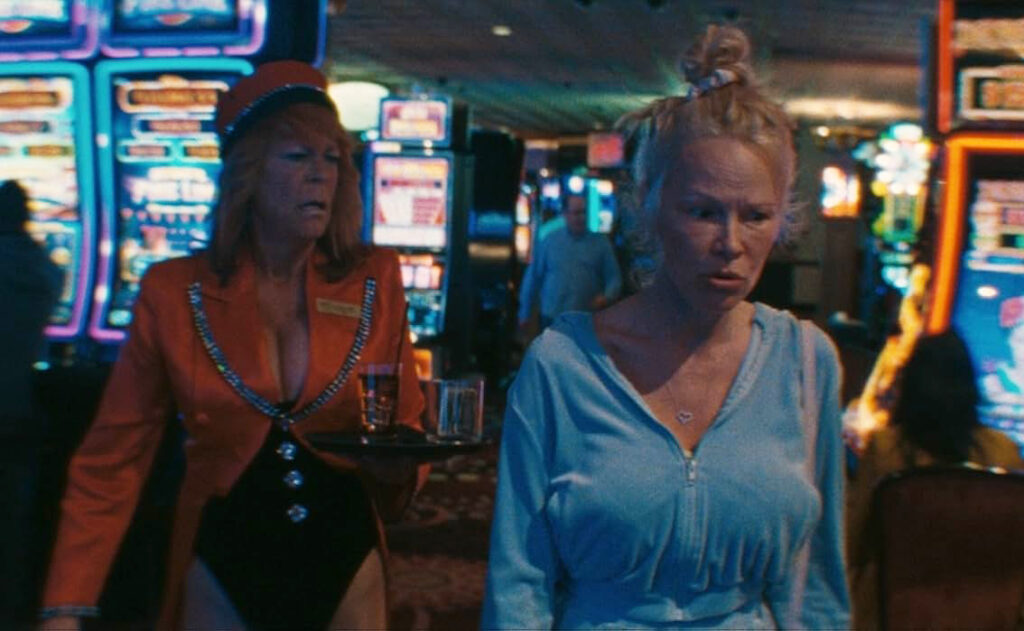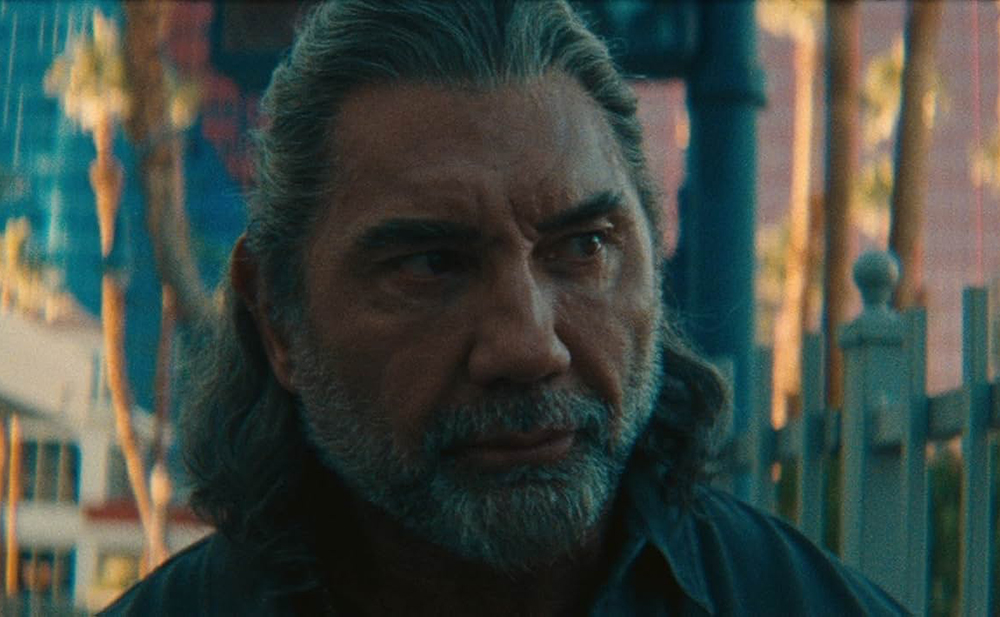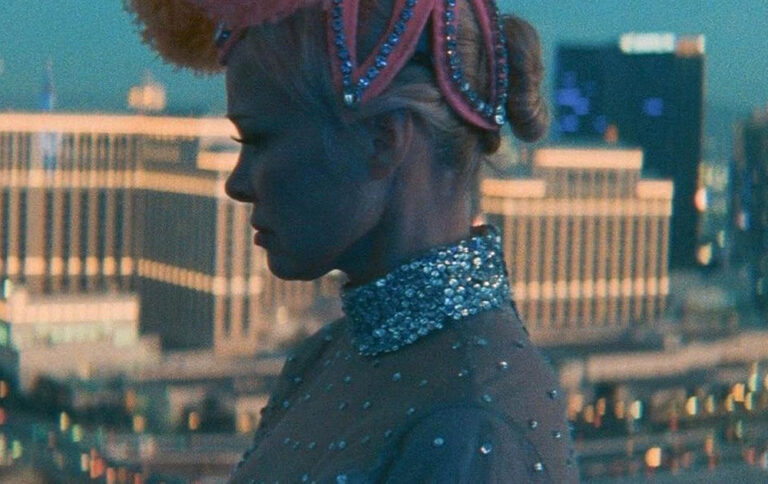Vegas is stingy on fulfilling dreams but generous with disappointment, the entire city designed to make your cash and dreams disappear faster than that magician opening for Rich Little in the Congo Room at the Rio. “The Last Showgirl” (directed by Gia Coppola and written by Kate Gersten) features two Las Vegas natives who have much humbler dreams than hitting it big at the craps table. Shelly (played by Pamela Anderson) and Annette (Jamie Lee Curtis) simply want to stay relevant and employed.
Protagonists Trying to Stay Relevant
The women, both in their fifties, work in jobs where you’re considered disposable after turning 30. Shelly’s the titular showgirl and star of the casino show “Razzle Dazzle,” which is well into its 35th year. Over the decades, through a mix of talent, sexiness and sheer grit, Shelly managed to become the focal point of the show, taking center stage as an army of young dancers twirl around her like music box figurines.
Despite her years in the show, Shelly’s struggling financially because as the number of people attending the show decreased so has her paycheck. Early in the film she gets the news she has dreaded, delivered by the show’s Producer Eddie (Dave Bautista): in two weeks “Razzle Dazzle” is closing for good.
Simultaneously, Annette (working as a cocktail waitress) finds she’s getting less and less shifts, losing hours to younger girls, most of them not knowing the difference between a Sex on the Beach and a Strawberry Daquiri. Throughout the film, Shelly and Annette lean on each other for support as they struggle to find their footing in this youth-obsessed microcosm.
Looking Good in Retro 16mm Film

Gia Coppola and Cinematographer Autumn Durald Arkapaw decided to film “The Last Showgirl” in 16mm and it makes the film startling to watch. In an age where every film seems to be in 4K 3D Dolby Vision so pristine that you can see the ruffles on a mosquito’s wings, viewing a 16mm print feels like entering a time warp and walking into a theater in the early 1970s. Some of the scenes are fuzzy, with edges a bit out of focus. I liked the retro look of it, the imperfection. To me, it was the perfect symbolism, representing Shelly and Annette’s youth and prospects fading away.
Several scenes show Shelly drifting through the rundown sections of Vegas. Not the bright pulsating heart of the Strip, but those fringes of Vegas outside The Strip, the areas where abandoned buildings and cracked statues stand as monuments to a forgotten era. Shelly wanders through them like a ghost haunting ancient ruins and the 16mm film hits the spot in those scenes, giving them an extra layer of grit and intimacy.
Anderson and Lee Curtis are Great
Pamela Anderson does a magnificent job playing Shelly, imbuing the character with a heavy mix of sadness and desperation. Watching her put on her bright sparkly “Razzle Dazzle” showgirl outfit each performance, forcing a big smile for the audience and knowing that the end of the show’s run is coming, was incredibly sad and gut-wrenching to watch. It reminded me of those lines from The Velvet Underground’s song “Venus in Furs”:
I am tired, I am weary
I could sleep for a thousand years
A thousand dreams that would awake me
Different colors made of tears
As for Jamie Lee Curtis, can she ever give a bad performance? She’s equally amazing as Annette, sporting a wig of red hair that always looks like it’s 15 years out of style and chain smoking while squeezing herself into an ever tighter cocktail waitress outfit, hurling risque jokes at casino patrons as they toss back a few coins in tips. She and Pamela have great chemistry on-screen together, reminiscent of that working-class harmony that Ellen Burstyn and Diane Ladd had in Martin Scorsese’s “Alice Doesn’t Live Here Anymore.”
Good, Despite a Rushed Ending

Gia Coppola directs the film with restraint. There are no histrionics, no boisterous moments or booming flashes of fanfare. It’s just two women simply living their lives and wrestling with what to do next. Shelly’s estranged daughter Hannah (Billie Lourd) shows up to add another layer to the drama and Kiernan Shipka and Brenda Song are solid in their supporting roles as two of the “Razzle Dazzle” dancers who see Shelly as a mother/mentor figure.
The only issue I had with the film was that its 89 minute run-time was too short, with an ending that felt rushed. I feel adding another 15 or 20 minutes to tie everything together would have made for a better resolution to the film. Despite that minor complaint, I enjoyed the film and Pamela Anderson was quite good in it. I hope this becomes a second renaissance for her, where she can continue exploring dramatic roles with substance in many films to come.



